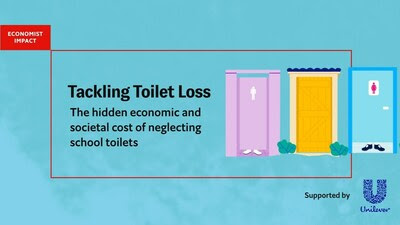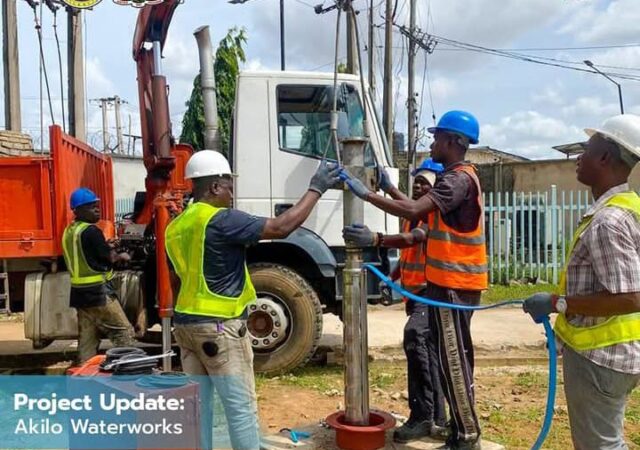- Launched for the upcoming World Toilet Day, the research supported by Unilever, identifies urgent need for school toilet maintenance.
- The cost of neglecting toilets has now hit US$1.9bn in lost infrastructure, with an additional hidden economic cost estimated at over US$10bn across four countries
- An extra cent per education dollar would help countries get clean and safe toilets for all school children by 2030
Nearly 540 million children globally go to a school with no usable toilet, affecting them physically and emotionally during crucial education years, says a new research from Economist Impact.
The report reveals that almost half of these children are affected by ‘toilet loss’ – toilets have been built in their school, but they have been lost and are not usable due to lack of operation and maintenance (O&M). This hidden worldwide problem puts school infrastructure maintenance sharply in focus.
Economist Impact’s year-long study supported by Unilever across Ecuador, India, Nigeria and the Philippines found that poor maintenance led to 1.2m ‘lost’ school toilets; that’s toilets that have been built but are no longer usable.
This equates to a combined infrastructure loss of US$1.9bn and a societal and economic cost amounting to US$10bn. The four countries, indicative of others worldwide, could be 10% closer to the goal of providing all children access to usable school toilets if toilet construction had been supported by maintenance.
‘Toilet Loss’ is a new way of quantifying the societal and economic cost of neglected toilets. This is the first time the far-reaching cost of poorly maintained school toilets has been quantified, incorporating healthcare expenditures for children sick with infections caused by poor sanitation, reduced family income from missed work and lost economic activity. As an example, Nigeria could see gains of US$6.7bn arising from 6m fewer cases of diarrhoea and 7m additional jobs, if we stop losing the toilets that have been built.
The world needs 20m additional toilets to reach the 2030 Sustainable Development Goal of universal sanitation in schools. Economist Impact analysis shows that eight million of those are currently ‘lost’ because they were built with no plan to maintain them.
Researchers from Economist Impact studied multiple investment approaches to meet this goal. They found that the most efficient and equitable way to accelerate progress is through a combination of smart investment in O&M and new construction, namely to ensure all toilets built always have a maintenance plan. In most countries, such a maintenance plan requires one additional cent of every dollar spent on education to make clean and safe toilets for all school children a reality by 2030, the study found.
Economist Impact’s in-depth analysis of Ecuador, India, Nigeria and the Philippines found that all four countries made significant progress since the establishment in 2015 of the SDG goals for access to sanitation in schools, but more progress is needed.
Across all countries, fully investing in maintenance of the already constructed toilets would prevent Toilet Loss and continue building on the progress made so far.
Jonathan Birdwell, Global Head of Policy and Insights, says:
“Investing in new toilet construction is essential, but failing to invest in operations and maintenance means that for every three steps forward, countries take one step back in their journey toward universal sanitation and schools. Children depend on us to make the right investment decisions so they can have the clean, safe, sanitary facilities in their schools that they deserve.”
Shuchi Suri, Head of Household Cleaning and Hygiene, Unilever says:
“At Domestos, we believe the world needs to think differently about the importance of well-maintained toilets in schools. That’s why we commissioned the Toilet Loss report to highlight the impact and importance of a useable, working toilet on children, allowing them to stay focused on what matters at school – their learning.
To get to a place where every school child has access to a clean and safe school toilet by 2030 – the deadline for Sustainable Development Goal 6 – we must work together with governments, development organisations, NGOs, academics and other private sector organisations to stop toilet loss.”







